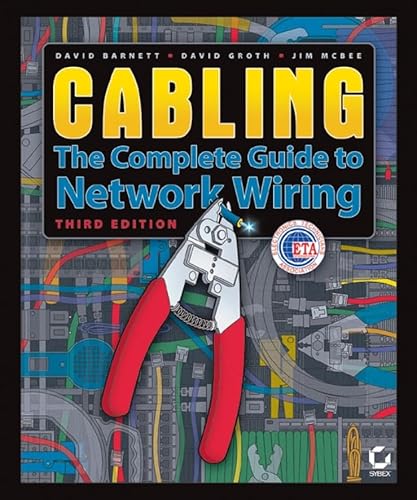The physical linkages responsible for carrying a company's data continue to be the most neglected components of the typical network—to the extent that nearly 70% of all network-related problems result from poor cabling.
In this third edition of a widely acclaimed resource, three networking experts share their extensive experience, teaching you the cabling skills you need to build a reliable, efficient, and cost-effective network cabling infrastructure. As you master these techniques, you'll learn to avoid common pitfalls and troubleshoot problems as quickly as they arise. Coverage includes:
- Choosing the right cables and components for your network architecture and topology
- Avoiding unnecessary and unexpected costs
- Understanding the current limitations of data communications and network cabling
- Understanding how laws and building codes constrain cabling
- Understanding the function and importance of universal cabling standards
- Determining when you have a cabling-related network problem
- Assembling a complete cabling toolkit
- Integrating voice and data on the same cable system
- Setting up an infrastructure in which desktops, printers, copiers, and other nodes share cabling
- Understanding issues of bandwidth, impedance, resistance, attenuation, crosstalk, capacitance, propagation, delay, and delay skew
- Working effectively with USB and Firewire
- Knowing when to discard legacy cabling and begin anew
- Documenting your cabling
- Creating an RFP and selecting a vendor
David Barnett is a network consultant and is revising the book in consultation with the authors of the first edition- Jim McBee and David Groth, authors of several Sybex books on Networking.
